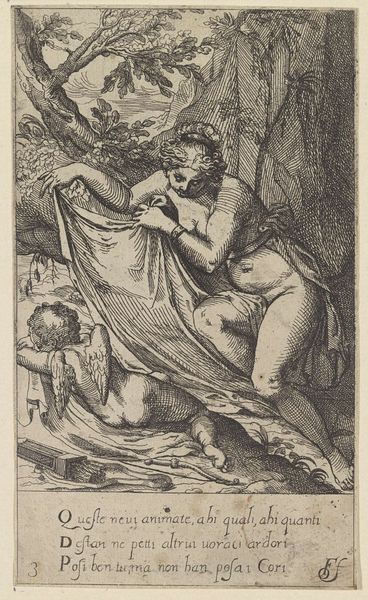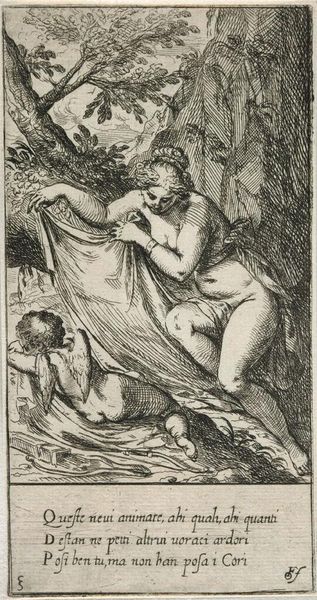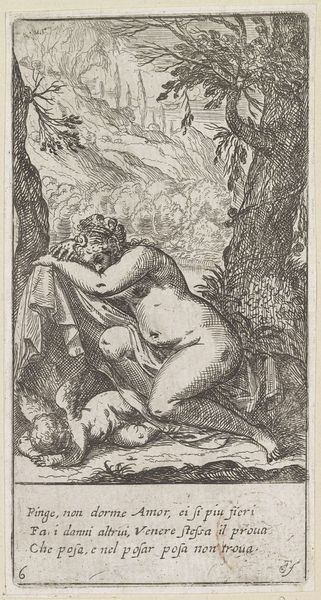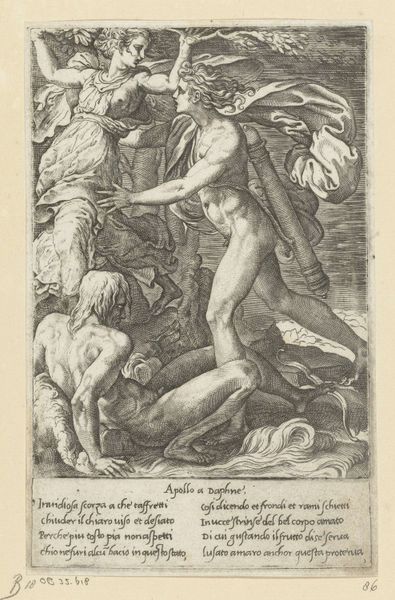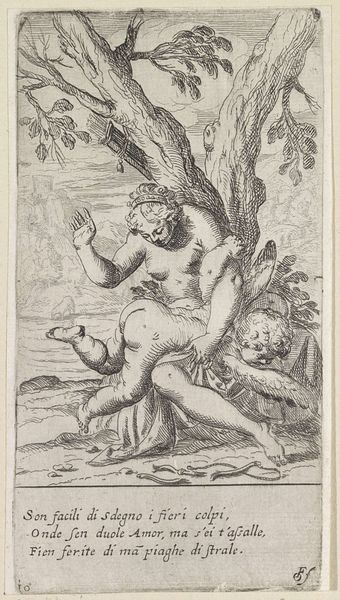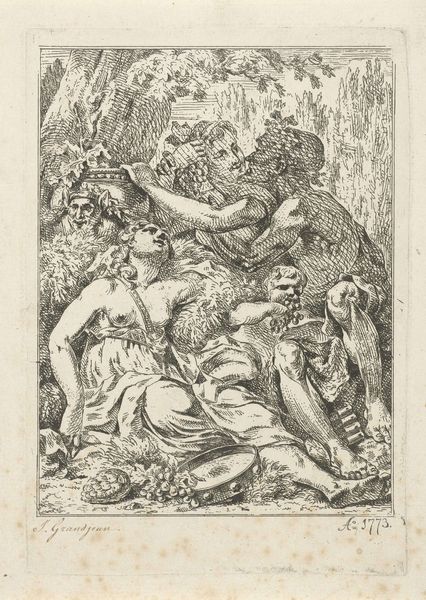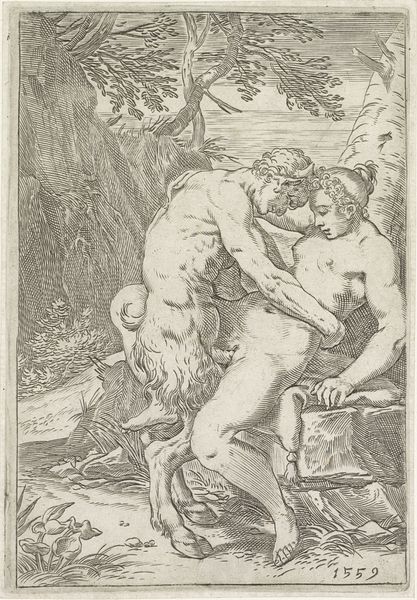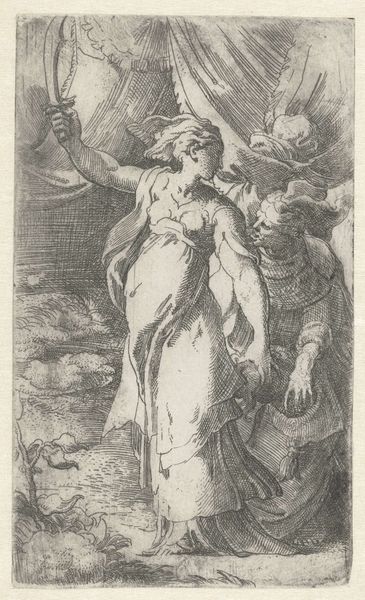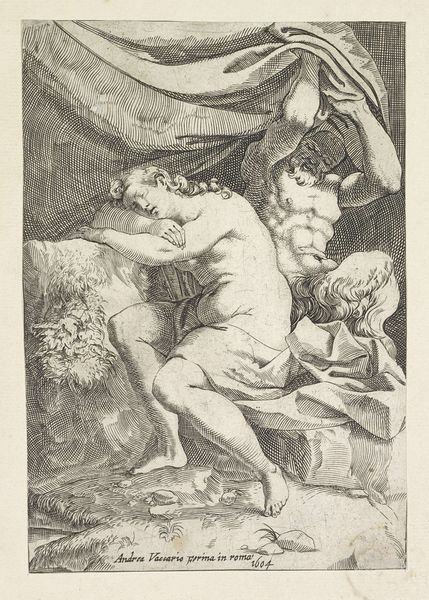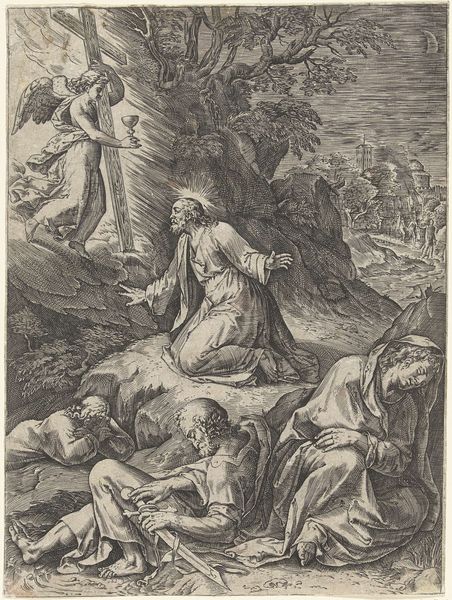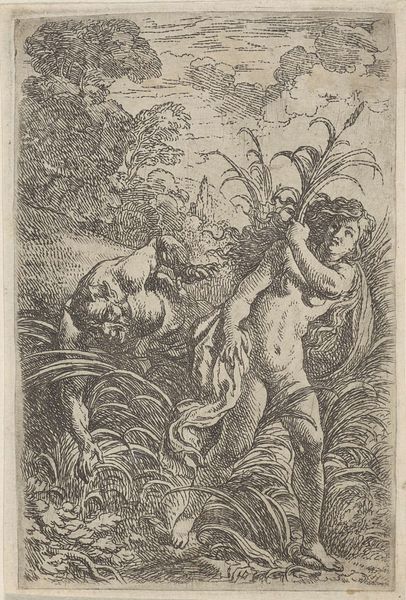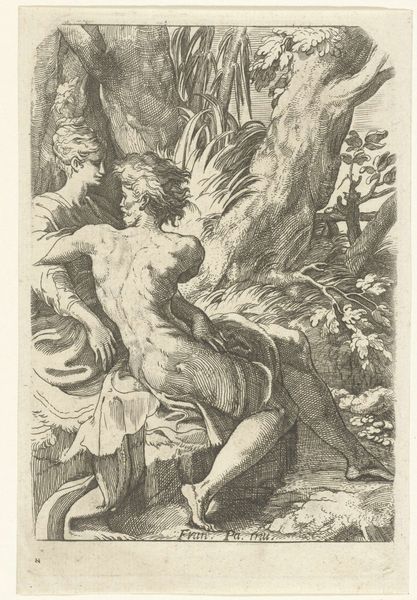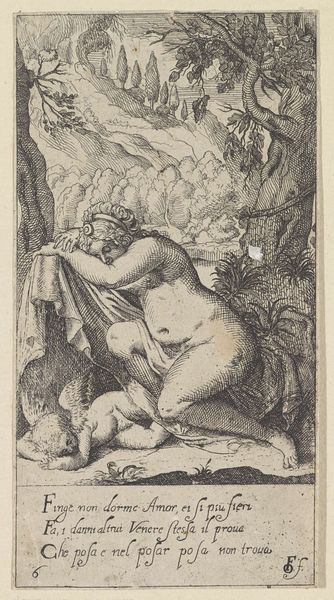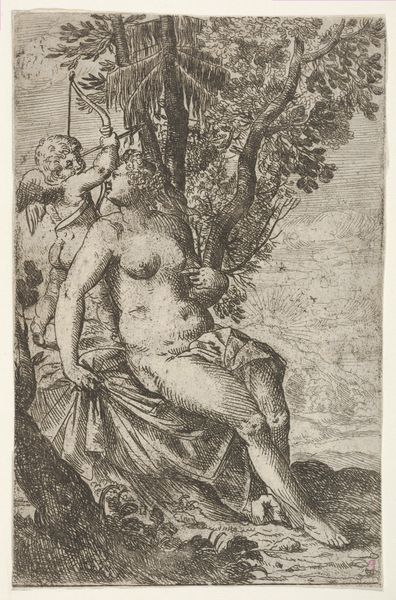
print, engraving
#
allegory
#
baroque
# print
#
figuration
#
line
#
italian-renaissance
#
nude
#
engraving
Dimensions: height 176 mm, width 91 mm
Copyright: Rijks Museum: Open Domain
Curator: Here we see "Venus dekt slapende Amor toe," an engraving crafted in 1617 by Odoardo Fialetti. The print, now housed in the Rijksmuseum, depicts Venus carefully covering a sleeping Cupid. Editor: My immediate reaction is one of quiet intimacy, even domesticity. The figures, rendered in these delicate lines, create a surprisingly tender scene. There's a certain stillness, a protected atmosphere within that shaded, overgrown grove. Curator: It's fascinating to observe the symbolic layers. Venus, as the goddess of love, overseeing a sleeping Cupid—love at rest, if you will. What message does this send, during the time when this work was made, to viewers? Editor: Perhaps about controlling the volatile passions, as expressed through the Renaissance? Cupid is rendered harmless in slumber while his mother exerts gentle power, a visual representation of managing desires through restraint. The act of covering becomes significant; obscuring potent imagery to temper its potential impact. I’m also interested in that choice of medium. Why make this scene an engraving rather than paint? Curator: The linear quality of the engraving adds an ethereal, almost dreamlike, quality. Perhaps this ethereal depiction makes sense of its wider proliferation as a work accessible to many, but also perhaps more intimate than a larger public canvas. Moreover, it enables reproduction and wider distribution. This democratizes classical themes, making allegorical ideals visually available beyond the elite. It becomes a widely circulated model. Editor: Yes, and that proliferation allows these classical allegories to take on new meanings. "Venus dekt slapende Amor toe," like many prints of its time, wasn't passively consumed, it entered dynamic social exchanges. How these images appeared in households, what messages the viewer took is a question. Curator: Agreed, by looking closely, this artwork offers us an entry point, it invites the audience to go a step further in interpreting its themes. Editor: Absolutely, examining its imagery, but understanding how this artwork could live a life of its own by participating in culture.
Comments
No comments
Be the first to comment and join the conversation on the ultimate creative platform.
